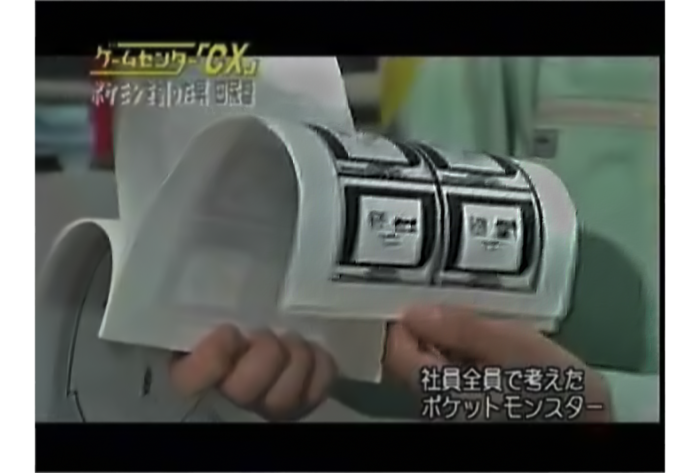
In 2004, Game Center CX interviewed Pokémon creator Satoshi Tajiri for one of their episodes. While discussing Pokémon development, Tajiri hands Arino a mysterious booklet titled “PM (Pocket Monsters) Kaiju Zukan” (怪獣図鑑, Kaiju Illustrated Catalogue), which looks like an official index of Pocket Monsters. (図鑑 zukan is, in fact, the same word used for the Pokédex). By analyzing the footage of this interview, we were able to determine that at least four individual scrapped Pokémon (now the infamous MissingNo.) have been hiding within this footage, right in plain sight, for 14 years!
Unfortunately, however, the extracted images are very blurry, as the highest quality version of the source material available at the moment is only 480p. The Tajiri Interview is actually featured in the Game Center CX DVD BOX 3, albeit in a heavily edited format, which sadly left out the segment in question.
The PM Kaiju Zukan booklet (we will refer to it as “Kaiju Index” for short from now on) might actually be a sort of printed proto-Pokédex for the original roster of 190 Pokémon, and may have been the last official document featuring complete names and sprites of every Pokémon that occupied a slot now held by MissingNo. These lost monsters may have been shown exactly as they were intended to appear in the games, just months before disappearing forever. Additionally, if Morimoto’s account about Mew’s creation is accurate, then Mew was not featured at all in this list, and something else occupied its slot. Needless to say, finding the full Kaiju Index would be the next Holy Grail of Pokémon history, but all we can do for now is thoroughly analyze these few precious, blurry seconds.
 The Kaiju Index is a black and white booklet printed in a longer format than our standard A4, possibly a legal 216 x 340 mm format. It sports a fairly fancy cover with a working Pokémon Logo that reads “PM” with a Pokémon standing between the two letters, and a Pokéball acting as the hole in the “P”.
The Kaiju Index is a black and white booklet printed in a longer format than our standard A4, possibly a legal 216 x 340 mm format. It sports a fairly fancy cover with a working Pokémon Logo that reads “PM” with a Pokémon standing between the two letters, and a Pokéball acting as the hole in the “P”.
The monster on the cover is a riddle in itself. It’s clear that it is one of the Kaiju-inspired Pokémon, possibly Nidoking, Rhydon, Gyaoon, or Blastoise. Unfortunately, again, the resolution is too low to make out its distinct features.
The cover also features one of the first instances ever of the Game Freak logo, the first dated one being the unused logo in Pulseman. Its fancy presentation may imply that it was supposed to be a document not just intended for the GF crew, but perhaps as a compendium for Nintendo, APE/Creatures Inc., or other companies involved in the project at large.
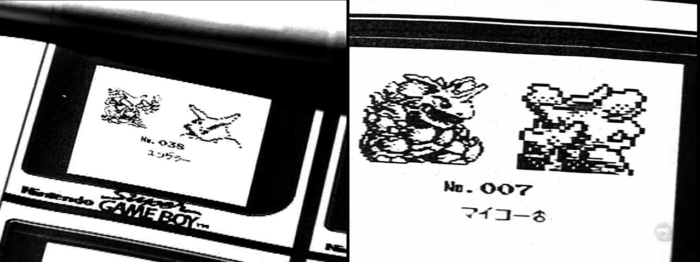
The Kaiju Index lists 8 monsters per page, in groups of 4. The monsters are listed following the Internal ID order. The layout of each screenshot is made very clear from the closeups of Nidoking (still called Maikō ♂ at the time), Slowbro, and Kadabra. It appears to be similar to the “Monster” debug menu seen in the Spaceworld 1997 prototypes of Gold and Silver, which were built off of Red and Green’s engine and probably shared several rudimentary debugging features.
Each monster has its own slot, featuring its 2 sprites (front and back, both facing right; the back sprite size is doubled), its name, and its internal ID number, while each picture is a printed screenshot taken from a Super Game Boy. This is an in-development build of the game, and the Super Game Boy’s existence can help us narrow down the date: the booklet was created during an early/mid 1994 – early 1995 timeframe (from the Super Game Boy’s release to some time before the debug).
THE 4 VISIBLE MissingNo.
Now comes the most intriguing aspect of this research.
After a quick glimpse at Nidoking, Slowbro, and Kadabra, Arino is shown briefly browsing through four pages of the Kaiju Index.
We can definitely see some known faces here and there, and our key to deciphering the list was, in fact, the third page featuring Pidgeot and Alakazam, which are by far the most recognizable sprites.
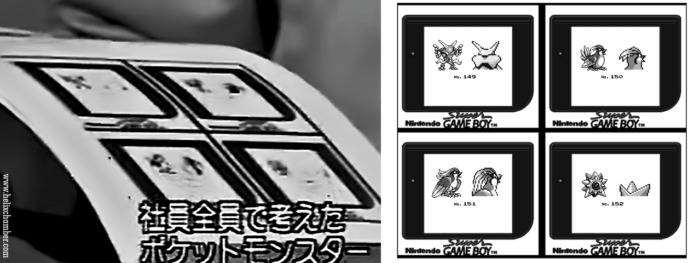
We then tried to follow the order backwards and found out that the ID list range shown goes from 128 to 160. Thus the first assumption that we can make based on this information is that the 8 MissingNo. in that range (134, 135, 137, 140, 146, 156, 159, 160) had sprites and a name.
Now you get to meet the first two “visible” MissingNo. Right on the first page. They’re no. 134 and no. 135 and they follow the P4b pattern (evolutionary relatives of either P1 or P2 Pokémon).
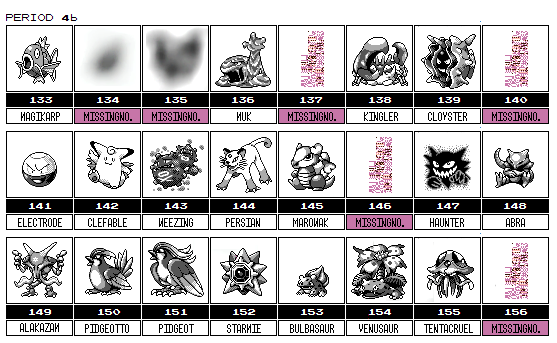
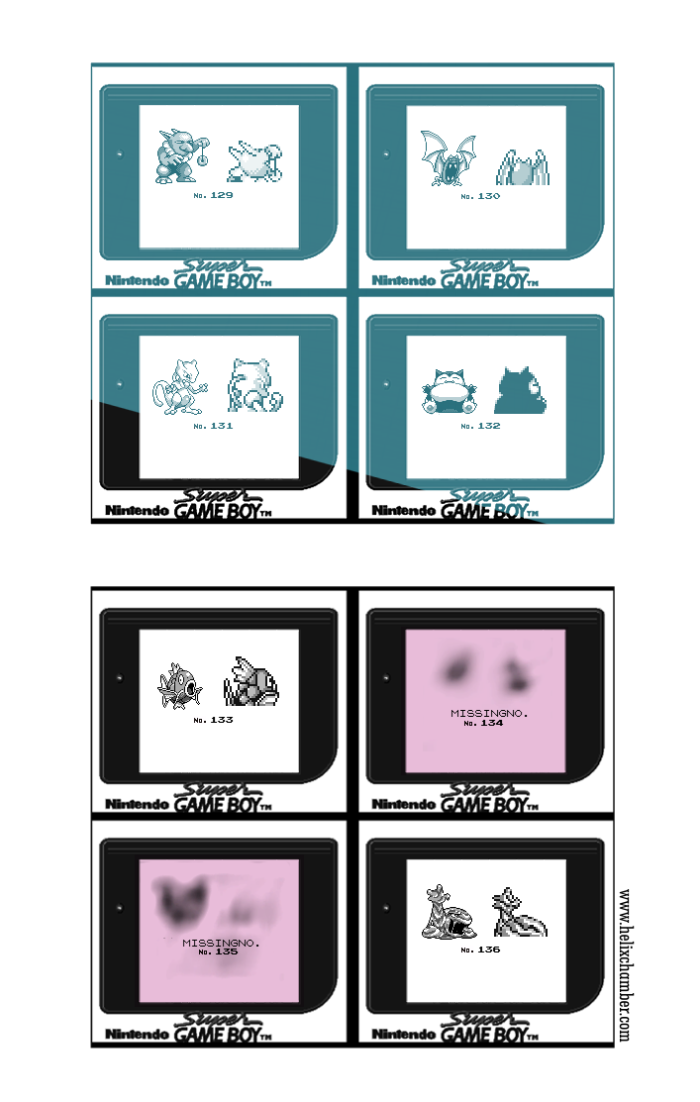
Side note: the nature of the print seemed to have rendered the brighter hue of the sprites’ palette as plain white. The printer washing out the lighter shading is not uncommon; we can also see a loss of midtone detail in the Game Freak company poll’s Pokémon sprite sheet. Given the blurriness of the footage, it would be best to avoid interpreting the darker spots as a whole silhouette, instead of seeing it as a combination of the darker hue and the midtone both being rendered in black.
Additionally, the lighting of the scene (and, more so, the unpredictability of the paper reflection) doesn’t allow for a uniform restoring of the pictures’ contrast.
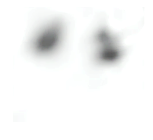
MissingNo. 134 looks like a small, almost triangular-shaped Pokémon. Its deprecated midtones hide a lot of its true volume and shape.
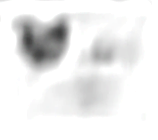
MissingNo. 135 is a seemingly heart shaped monster, interestingly looking like Graveler’s silhouette or some sort of… giant turkey. They might also be part of the same evolution line. More speculations will come in a future update, but for now, they’re unfortunately too blurry to elaborate on them any further.
Hopefully someday GCCX will release this interview in a higher resolution, but until then, we have no way of knowing for sure.
If you have any information about this footage in a resolution higher than 480p, please contact us on our Twitter account; with your help, we might be able to give a face to 134 and 135.

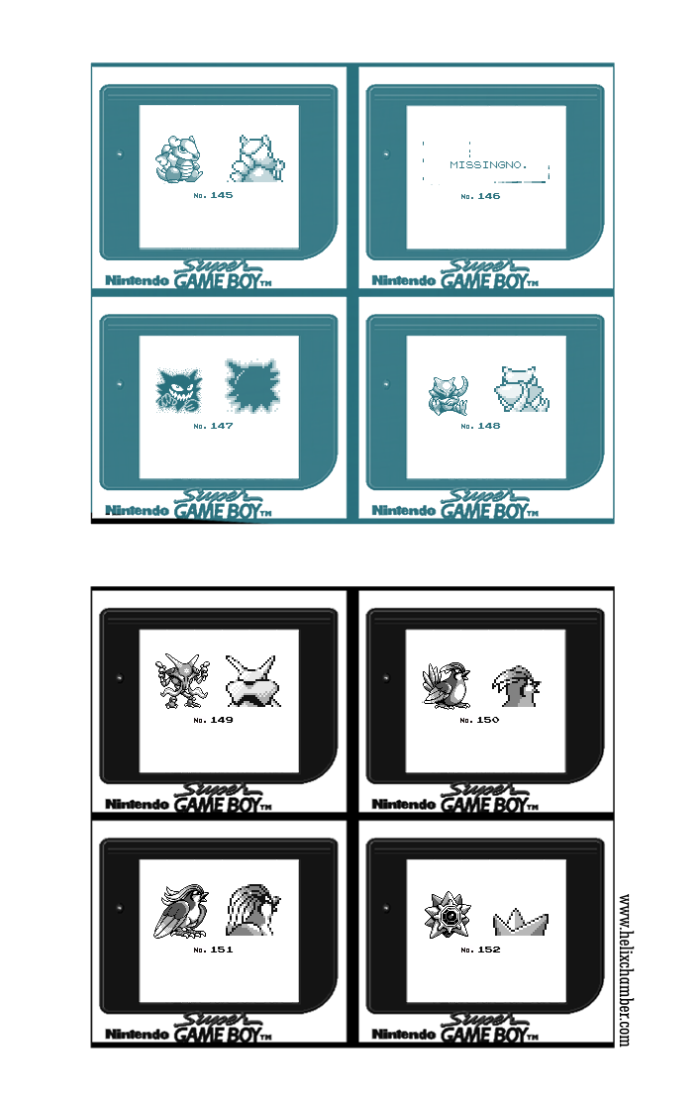
And now for the MissingNo. that we did manage to restore, no. 159 and no. 160 (P5, elemental fauna).
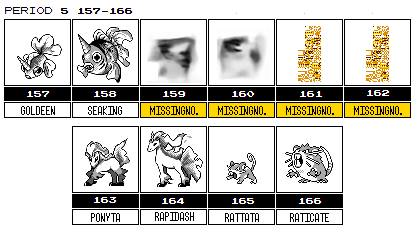
Still a bit difficult to see, but you can definitely make out some sort of small, roundish animal with dark ears.
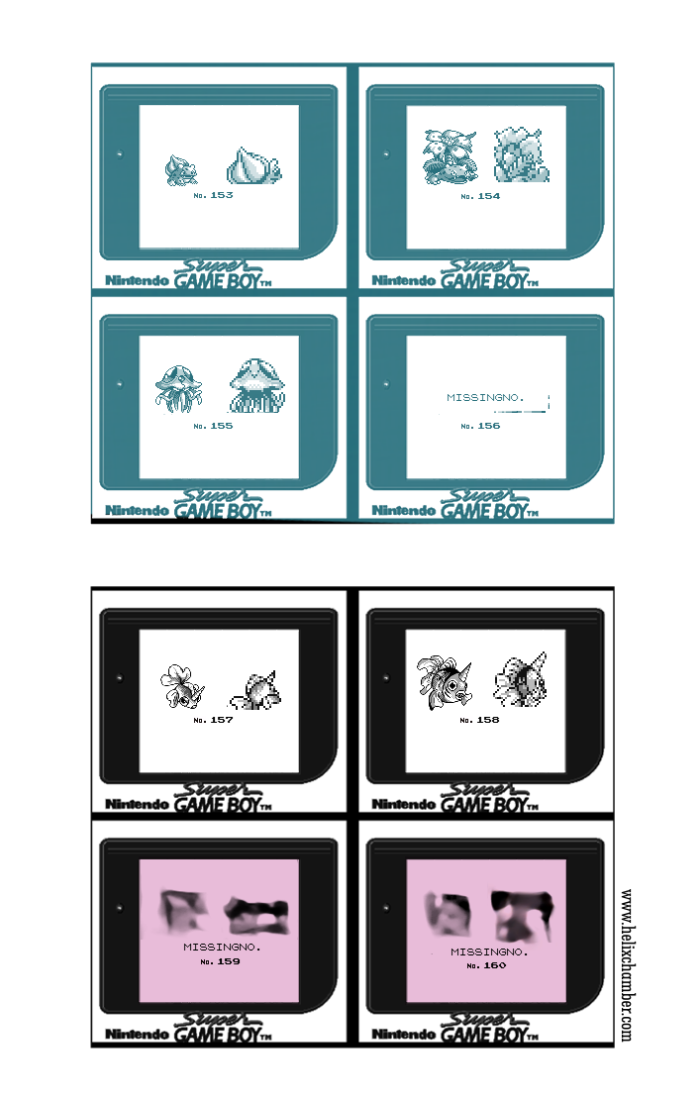
 Based on the position in the index order and judging by the traits of the Pokémon around it, these two Pokémon were likely part of the same evolution line. They were probably meant to be a fairly common Kanto inhabitant, similar to Rattata, or perhaps located in one specific area, like Ponyta.
Based on the position in the index order and judging by the traits of the Pokémon around it, these two Pokémon were likely part of the same evolution line. They were probably meant to be a fairly common Kanto inhabitant, similar to Rattata, or perhaps located in one specific area, like Ponyta.
We looked at these two for quite some time and initially compared them to just their Gen 1 companions, drawing similarities between them and the Rattata/Raticate backsprite and the Persian one. Our best guess as to its identity was a squirrel-like monster, possibly a proto-Sentret and Furret evolution line.
 The release of the Gold and Silver SpaceWorld 1997 prototype put this mystery on the back burner for a while. Eventually, the footage was revisited, and… we noticed that there was an uncanny similarity between these two and two of the unused Generation 2 Pokémon designs.
The release of the Gold and Silver SpaceWorld 1997 prototype put this mystery on the back burner for a while. Eventually, the footage was revisited, and… we noticed that there was an uncanny similarity between these two and two of the unused Generation 2 Pokémon designs.
We ultimately tried to overlay the enhanced frames – even the ones with little visibility- in hope of skimming some more details from the blur. As soon as the general shape became clearer, the resemblance with the discarded Gen 2 Pokémon was uncanny.
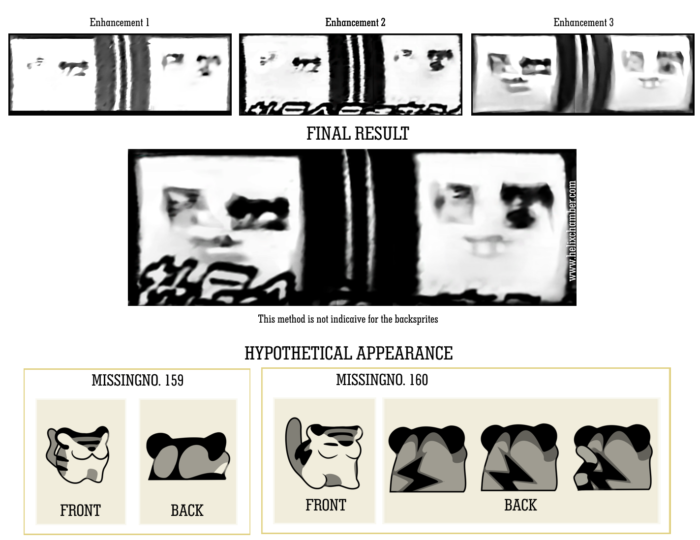
We’re now pretty positive they’re in fact Kotora and Raitora, all the hints point in this direction.
With all the fan-art these two generated, it’s hard to believe they weren’t just cut from one game, but two!
Possible restorations
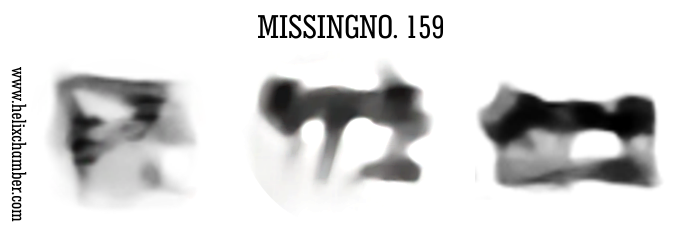 159 Kotora’s front sprite seems to be generally the same as its Gen 2 one; the only noticeable difference is that it looks a little bigger, so perhaps the sprite isn’t exactly identical. We tried to scale the whole screencap to its correct proportions, and while the backsprite perfectly fits a 56×56 bounding box (28×28, doubled), the front one is bigger than the existing Kotora sprite from the G/S prototype.
159 Kotora’s front sprite seems to be generally the same as its Gen 2 one; the only noticeable difference is that it looks a little bigger, so perhaps the sprite isn’t exactly identical. We tried to scale the whole screencap to its correct proportions, and while the backsprite perfectly fits a 56×56 bounding box (28×28, doubled), the front one is bigger than the existing Kotora sprite from the G/S prototype.
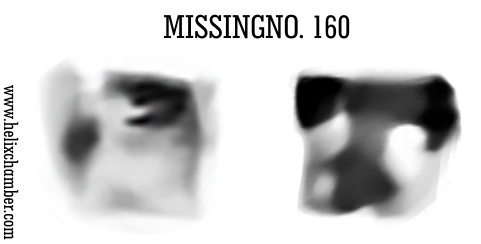
160 Raitora’s front sprite looks totally different and smaller than its gen 2 sprite. Our blurry enhancement is very open to interpretation, but its distinctive features are fairly visible. Resolution aside, Raitora’s back sprite seems fairly close, if not identical to, its Generation 2 sprite. The lightning bolt’s orientation could be either left or right-facing, and the tail may or might not be showing on its back sprite.
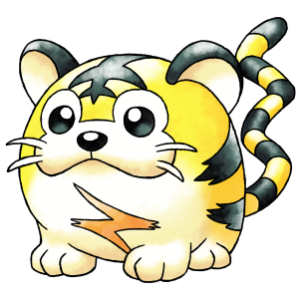

Art by RacieB
INSIGHTS AND MYSTERIES
Did it really feature 190 monsters?
We’ll briefly analyze the page progression and highlight some discrepancies.
In one of his thorough Pokémon analysis, Crystal_ interestingly pointed out that not all the MissingNo. could, in fact, have been completely coded monsters. You can read their insightful post here and here.
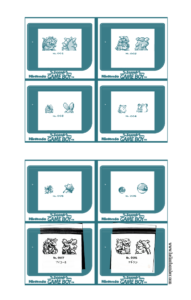 Had we not seen Kadabra’s placement on the page, we would’ve gotten the illusion the Kaiju Index seamlessly listed the Pokémon progression from 001 to 190.
Had we not seen Kadabra’s placement on the page, we would’ve gotten the illusion the Kaiju Index seamlessly listed the Pokémon progression from 001 to 190.
The problem is that the placement of 038 Kadabra in an uneven slot (possibly the first slot of the page) doesn’t make much sense and raises some questions. For Kadabra to be the first uneven slot, we must theorize 3 pokémon are missing before it, and 5 between Kadabra and Magikarp. Kadabra could also be the fifth slot and not the first as speculated, leaving us with 7 slots missing before Kadabra and just one after it.

For all the 190 pokémon to be there, There might’ve been a reprint of some pages between 38 and 133 as a kind of last-minute amendment, or some other kind of interruption, like a logo or some captions.
There’s a slight chance of duplicate designs for some Pokémon, like Barunda (A) and possibly (B), but that wouldn’t really make sense on a seemingly ultimate list.
Anyway, as we previously said, the pages shown confirm the existence of 8 MissingNo. In total, there’s also at least another page after 160 that could range from 161 to 168 including even MissingNo. 161 and 162. We have of course no further proof but common sense for that. For a more accurate analysis of the page sequence click here.
At any rate, a glaring question remains, Why print a numbered list with missing numbers?
The “Tail” Artifact
If you ever venture to browse the enhanced non-slowed down footage we have provided, you might happen to be intrigued by this frame that seems to show a distinct, long tail for Kotora.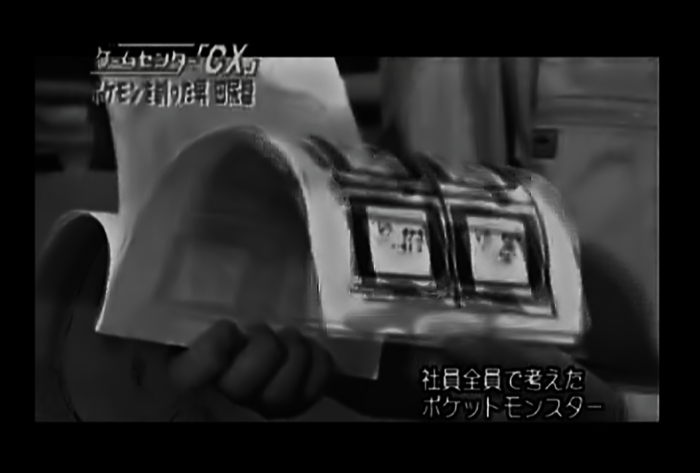
This was the first frame we considered for the initial “proto-Sentret” interpretation as well as that of Rattata, because it made the creature seem rodent-like. Sadly, the seemingly well-defined tail is just an artefact produced by combining the darkest upper section features of Kotora’s sprite with a motion artefact in the shape of a tail. The more you know…
MEDIA AND DOWNLOADS
REFERENCES
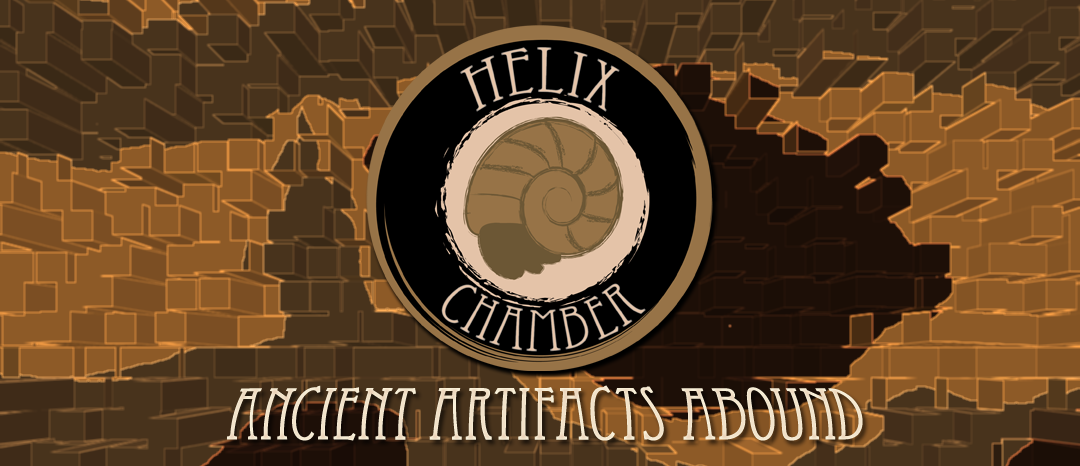
This is some incredible deductive work! The Helix Chamber team should all be proud of their efforts and I can’t wait to learn more from you guys!
Those two I identified look like snorunt and glalie to me. That’s just a guess of mine.
*unidentified. Sorry, auto-correct.
Yes #134 is Snorunt and #135 is Glalie….they reused the scraps in later games.
Can you do.more of these discoveries I really enjoyed it about the prototype Pokemon.
We wish we could! 😀 Anyways our next research will be up in a couple of days and might shed some light on the other MissingNo.! cheers!
I’m thinking all the pokemon from the 1997 gold proto were actually left over from gen 1 …
It’s definitely a possibility, perhaps not “all” of them since the 1997 demo is not the first Pokémon 2 build, anyways Tajiri stated “We designed more than 200 Pokémon for the first games, then whittled them down to 150. This game [Pokémon 2] will exceed 200 Pokémon, but we already have over 350, which leaves me wondering which ones I should keep.”, definitely intriguing!
Is it safe to assume the show is this quality on the actual DVDs themselves, or is this just the result of poor upload quality and copyright protection? If you can write me back, I’d like to know: I’m hoping to do some of my own digging on this topic.
We’ve got the DVD! And is indeed in a better res/compression, a real pity the segment is not included because we asked around, and if the TV interview is the only source, chances are the segment survives at just 480p. It would be still possible to find a better compression though, the recording/upload quality is quite poor! Cheers!
Missing No. # 159 looks like a proto-type Quilava look at it carefully….that’s why it was one of the starters in Gen II also someone check Gen II ID numbers!
Missing No. # 160 looks like a proto-type Quilava look at it carefully….that’s why it was one of the starters in Gen II also someone check Gen II ID numbers!
Missing No. # 159 looks like a proto-type Cyndaquil look at it carefully….that’s why it was one of the starters in Gen II also someone check Gen II ID numbers!
I hope a Kaiju Zukan leak in the next days, in order to see in high resolution the front sprites of the deleted pokemons.